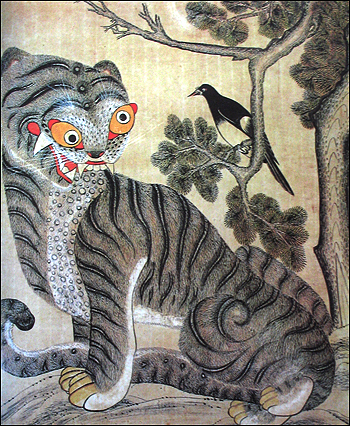Korean school

Korean school
The Korean school of painting, a significant cultural and artistic movement in Korea, offers a unique perspective on art, seamlessly blending various influences while maintaining a distinct identity. Korean painting, known for its harmonious and naturalistic tendencies, has evolved through several historical periods, each contributing to its rich tapestry.
From the Goguryeo tomb murals dating back to around 500 AD, characterized by vibrant imagery and original styles, to the Goryeo Dynasty's elegant Buddhist paintings, Korean art has always been deeply intertwined with the country's religious and cultural ethos. The Goryeo period saw the introduction of realism in art, a trend that was further refined during the subsequent Joseon Dynasty (1392–1910). This era is particularly noted for its variety, with a significant shift towards Confucian themes and a greater focus on daily life and natural landscapes in Korea.
Joseon painters like Yi Am, Sin Saim-dang, and Yi Chŏng, known for their scholarly approach, favored natural subjects like the pine tree, bamboo, plum tree, and orchid, along with popular motifs like birds, insects, flowers, and animals. The "true-view landscape" style, established by artists like Chŏng Sŏn, depicted the authentic Korean terrain, particularly the rugged peaks of Mount Kŭmgang. This approach was distinct from the earlier Chinese-influenced styles and marked a significant development in Korean painting, emphasizing a balance between realism and artistic design.
Minhwa or folk painting also flourished during this time, reflecting the lives of the common people and often incorporating symbols of good luck and prosperity. These paintings, created by anonymous artisans, faithfully followed traditional forms and were intended to bring good fortune to the owner’s household.
Today, the Korean school of painting is celebrated for its unique blend of simplicity, spontaneity, and harmony with nature. Its evolution reflects Korea's historical and cultural journey, making it a fascinating study for art collectors and experts alike.
Stay updated on the latest in Korean painting, including upcoming product sales and auction events related to this exquisite art form. Sign up for our updates and immerse yourself in the world of Korean art and antiques.
| Country: | Asia, Korea |
|---|---|
| Start of the period: | VI century |